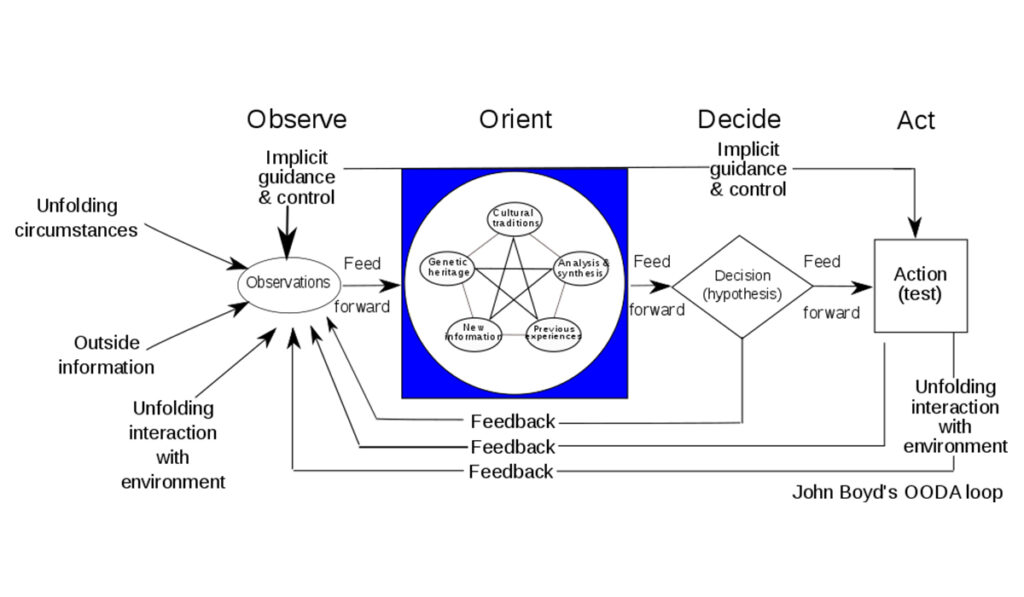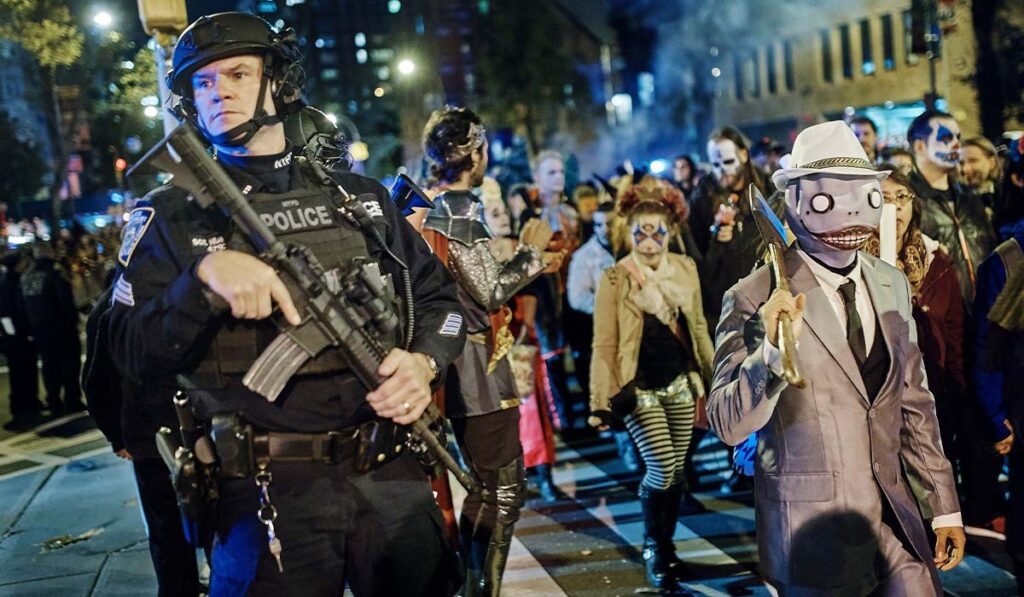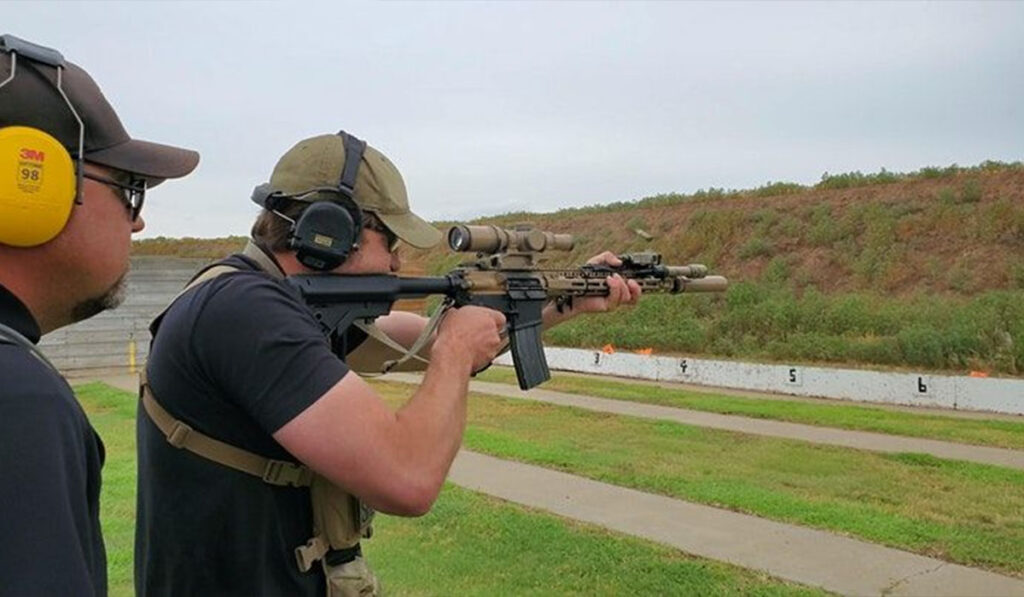Planning and practice must go hand in hand to properly implement situational awareness.
Situational Awareness is one the most important skills you can learn to master that will contribute significantly to reducing the likelihood you will become a victim and give you the advantage when something bad happens. Situational Awareness is the process of making conscious observations of your surroundings and having tentative plans of action if something bad were to happen.
Situational awareness is a state of mind. Thus, it must be practiced constantly to become fluent in its use and implementation. I cannot emphasize how important it is to practice and use Situational awareness at all times. It will most likely be when you have failed to use this mindset that you become a victim or are caught off guard.
Some might deem you paranoid; others may say you are overly concerned; however if something terrible should happen, you will have a tremendous advantage over those that think that way. And that is your advantage.
Planning and practice are the two keys to survival. Each compliments the other. You can plan, but if you do not practice, you will not have the skills to meet your objective. On the other hand, if you practice but do not plan, you will not have a coordinated, smooth response.
How History Plays a Role In Situational Awareness

The role of situational awareness was first recognized during the Korean and Vietnam wars. During those wars, we lost numerous pilots because we were terrible at dog fighting. But a few pilots were able to successfully shoot down enemy planes and even become aces.
When these pilots were interviewed, it was determined that they all used a similar method of analyzing the actions of the enemy pilots, which was used to their advantage and thus enabled them to shoot down more aircraft.
Based on this research, John Boyd developed the OODA Loop. This was a relatively complex algorithm that organized the processes used by the pilots and instituted a way of thinking that enabled a person to use current and past observations to make future decisions.
Boyd’s OODA loop, which stands for Observe, Orient, Decide, and Action, created an organized process for taking current observations, converting the observations into usable data, orienting that data, followed by deciding on your tentative plan, and finally, if necessary, activating the program.

By doing all this, you give yourself an advantage during a bad situation since your actions will be based on predetermined plans and thus create a greater likelihood they will be successful. I encourage you to look up the OODA loop and spend time studying it so you can utilize the principles. It is an invaluable tool to be used as part of your Situational Awareness process.
Let’s start by understanding situational awareness, how to implement it, and use it to your advantage. In general, the first step in determining your future action plans is based on the immediate situation you are in.
For example, are you solo or with a group of people? Being solo have lots of advantages and enables you to make decisions without having to consult or inform anyone else.
So, in this case, checking your surroundings and making tentative action plans are simple. However, on the other hand, if you are in a group this process can become far more complicated.
One of the means to reduce the complication and confusion is to have a predetermined “code” that enables you to gain the attention of all members of your group.
To best protect your family and ensure everyone is aware and ready to properly respond in the event of something terrible happening, every family should have a “code word” that, when announced every, one directs their attention to the family leader.
Once the attention of the group is acquired, the group team leader can give commands and instructions on how to proceed. This is imperative to group survival.
Response to Critical Situations

Jeff Cooper adapted a color-coded definition of human awareness and response to critical situations. Understanding these states of mind and applying them to your everyday life is vital to survival.
White:
Completely unaware of your environment and surroundings. This is clearly the most dangerous condition to be in; you are the most vulnerable in this state. This condition can occur while you are driving, daydreaming, talking on your cell phone, texting, and managing your kids.
Naturally, there are many more instances that could be mentioned that reflect condition White. Again, this is the most dangerous condition to be in, the condition that bad guys like to find you in, so they have the advantage.
Bad guys in general know how to look for people in this state of mind. While you are distracted they are planning their attack strategy.
Yellow:
Is relaxed but alert and in touch with your surroundings. This is the first stage in the OODA loop, the observational phase. You are looking around, noting where exits are, watching who is entering the door, determining the lay of the land and considering basic action plans.
This can be conducted in a casual manner without anyone knowing what you are doing and not interfering with your current activity. This level of awareness will allow you to notice normal and aberrant events quickly. This is the phase when you will begin to see things you have never noticed before. This is a good thing.
Orange:
Your alertness has increased significantly, something is not right, action maybe required, and more formal action planning is required. Examples include people arguing, someone acting inappropriately, someone moving into your personal space, or an actual bad event happening.
This is an action level of awareness; you need to make decisions at this level. It could be leave the area and be non-confrontational. It could be gathering your children or group. Seriously, consider you personal protection action.
If you have practiced level Yellow well then this phase can be managed without considerable problem. However, if you have not implemented condition Yellow, you and everyone in your group will be caught off guard, confused and disoriented when an untoward event occurs. And you have significantly increased your likelihood of becoming a victim.
Red:
Immediate Action is Required. This does not necessarily mean interventional action. It could mean leaving the location, finding the fastest exit, seeking cover, activating your personal protection plan.
It is also a time when intervention may be needed, such as, actively protecting you and your family members and using some form of personal protection device. Delay in implementing your personal protection plan that involves protecting you, your family, or innocent individuals will result in a bad outcome.
This is the time when fear, reservation, confusion and lack of planning can place you in greater danger. It is imperative you be assertive at this level. If you have managed level Orange well, then this phase can be somewhat seamless. Since you know what you are going to do.
I cannot state enough how practice, practice and practice will be your best friend if you should find yourself in this situation. As mentioned earlier in this paragraph, hesitation, reservation and confusion are not your friends when this type of action is required.
Black:
This is the final condition and it is significant. In this condition, you most likely will be in a state of shock or confusion. What just happened? This is the level where you must regain your conscious state of mind, organize your thoughts and settle yourself down. Because you may be completely confused after an event occurs in which you had to intervene.
It is important that you take the time to regain your thoughts and what happened. That is why you should not talk to the police after a major interventional event. Naturally, you should be polite and professional and understand that you are going to be detained and maybe even arrested. But you must clearly state that you wish to speak with you attorney before talking in depth to the police. They will understand in most cases. You must have time to get your thoughts together and clearly regain a good picture of how the events transpired.
How Training Affects Operational Success

Professionals in the firearms, personal protection, and safety business cannot stress enough about how important training is when it comes to operational success. Thus, to perfect your skills you must train constantly.
That means practice making methodical decisions based on good information. Practice situational awareness all the time no matter what environment you are in. Finally, learn how to use your EDC tools effectively and quickly. Practicing these skills are key to success and a positive outcome. It is vital you do this.
Here are some examples. Train yourself to not make any decision while you are angry or emotional. Learn to slow yourself down, look at the facts and then make a solid decision. Another practice scenario is more complex and engaging. When at an event observe what is going on around you and try to anticipate the actions of the people you are observing.
Another method to train for adverse events is a training tool called Stress Inoculation. This training places you in stressful situations while training to better prepare you for a real event.
There is a wide range of means to apply this to your training and I am going to share a fairly simple one you can use. In most cases, this training tool cannot be used in your traditional range. One way to add some stress to your training regime is to make it more physically challenging.
One method you might choose is to do some pushups or jumping jacks before you shoot. As expected, this will significantly increase your heart rate, blood pressure and breathing and add some stress to your shooting performance.
Learn to plan as you observe. For example, as you enter a restaurant, take a minute and determine:
- Where are the exits?
- Where can I sit so I can watch the door?
- Where is the least crowded area of the restaurant so you can have space?
- Can I see my car from the restaurant?
As you walk to your seat, do the following:
- Watch people eating and what they are wearing.
- Make a plan.
- If this happens, I will walk through this door.
- Or if that happens, I will move to that place.
- Don’t forget to have fun while you keep an eye on your surroundings.
The next step in this series is to learn how to use your tools well. Make sure your phone has a quick button for calling 911. Practice opening and closing your knife to the point where you can safely do it in the dark.
Finally, and most importantly, make sure you know how to use your personal protection tools very well. This tool may save your life; thus, you need to know how to use it and not have any reservations when the need arises for you to use it.
Have an Alert State of Mind
In summary, Situational Awareness is a mental state of alertness that enables you to be actively aware of your surroundings when an untoward incident occurs.
In that case, the proper application of Situational Awareness will enable you to respond quickly and intelligently so you can adequately address the unusual event.
Having the necessary EDC survival tools with you and the comfort and knowledge of their use will enable you to feel secure in your actions. The ability to respond quickly and affirmatively and the sense of security comes only from practice, practice and practice.



